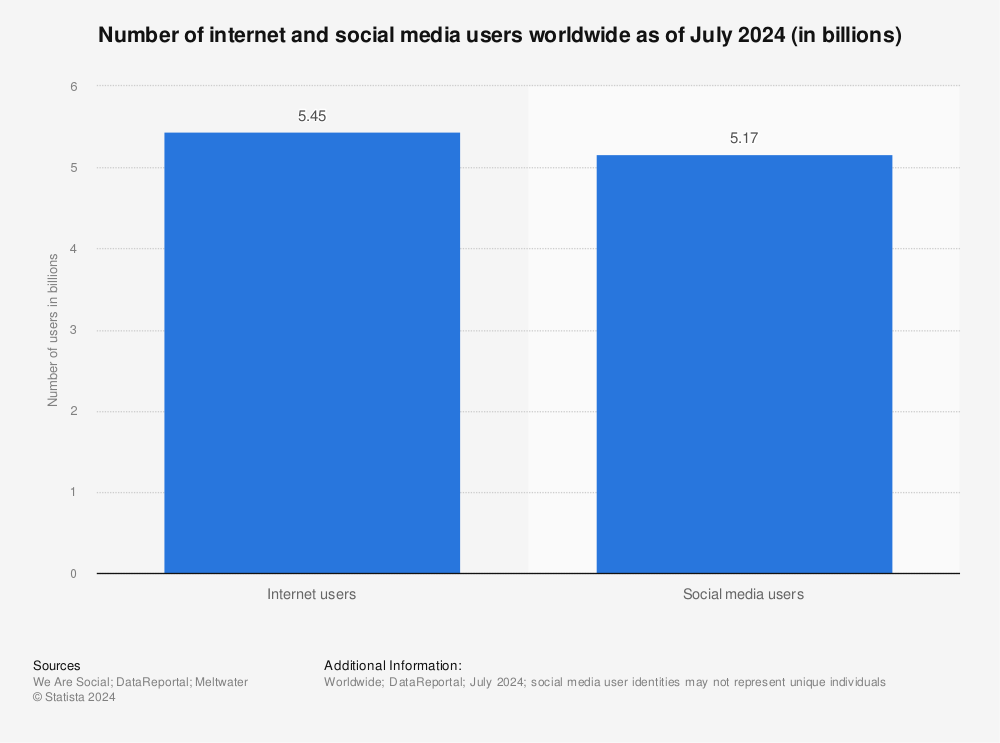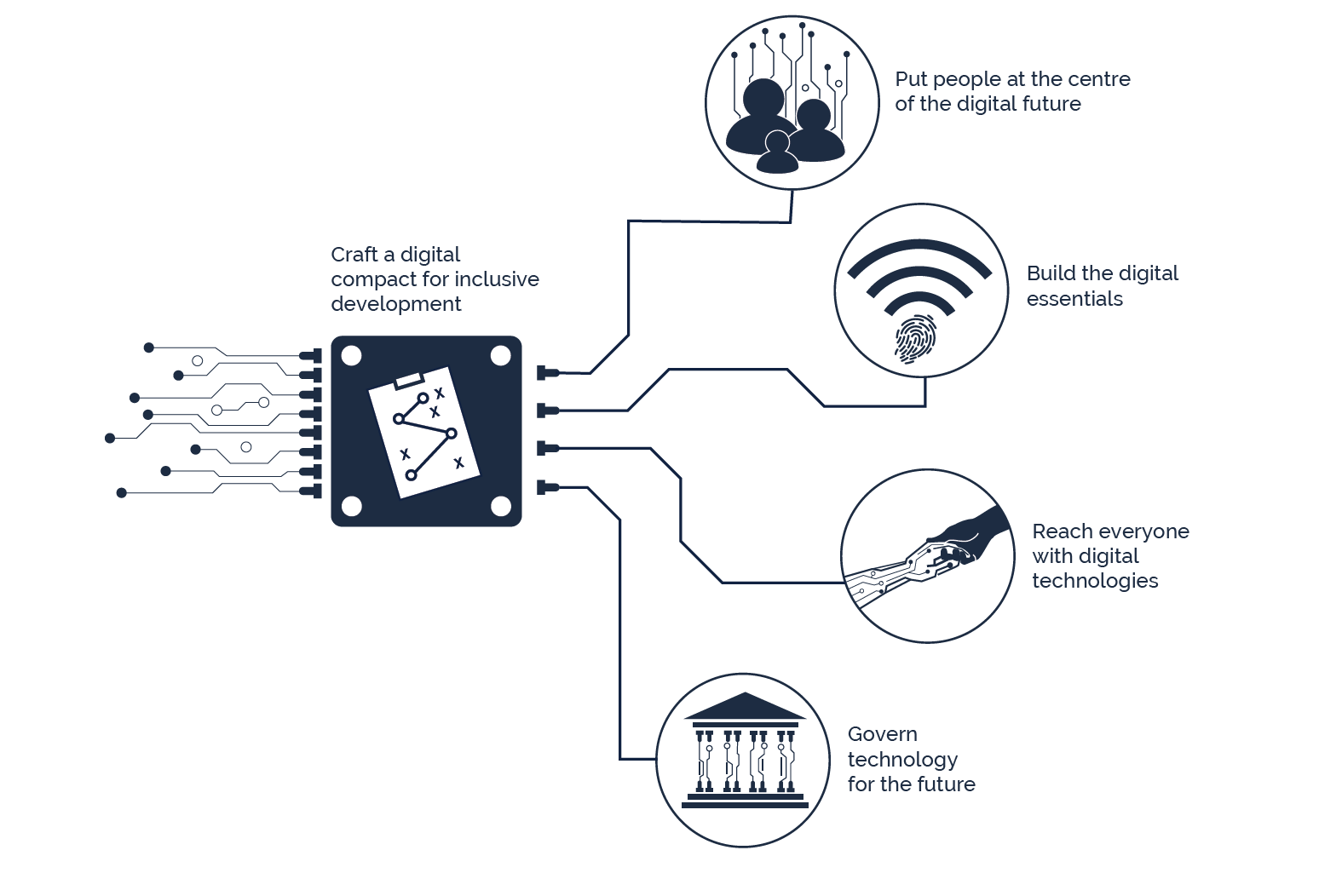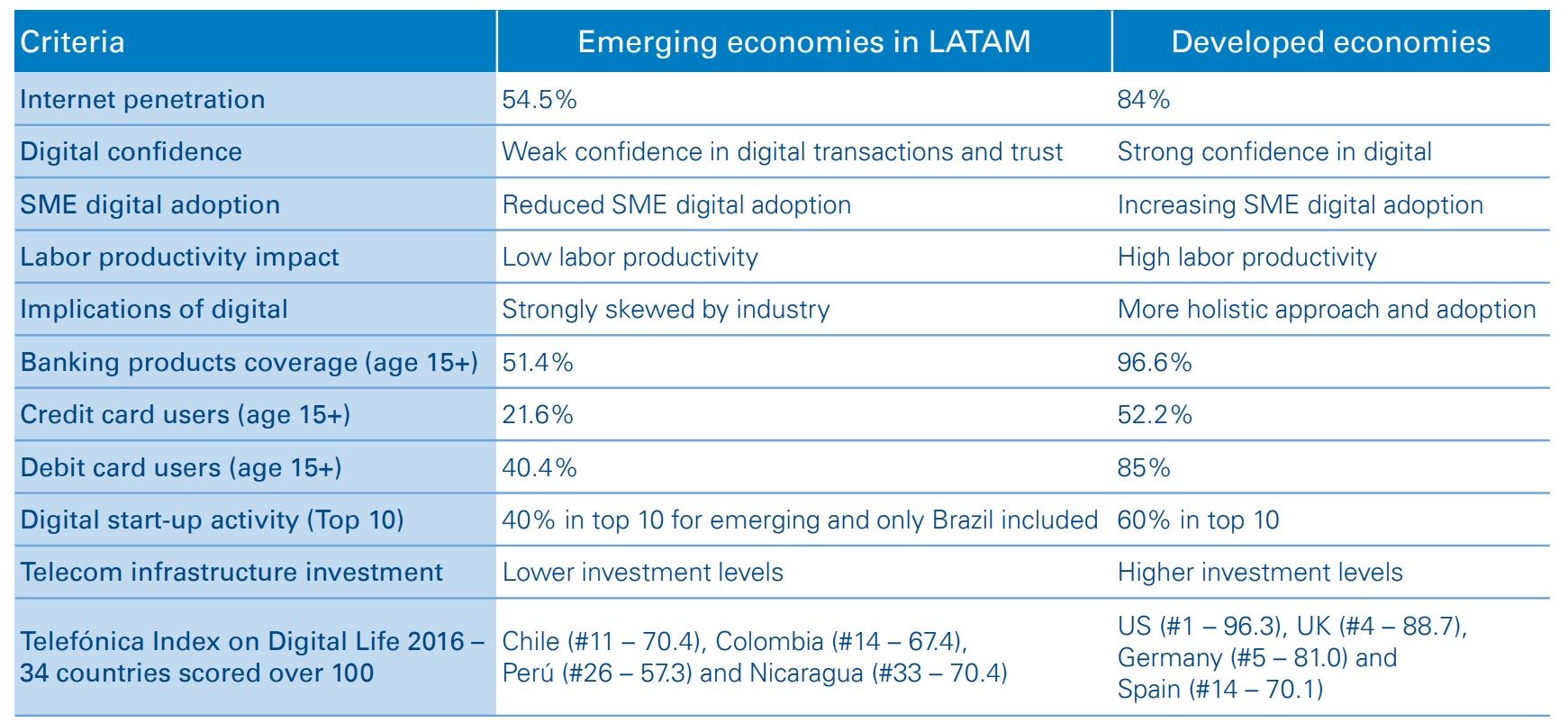The industrial revolution started in the 18th century and has since paved the way for modern technology, and therefore, resulted in today’s digital society. Unfortunately, the digital transformation has been made evident in developed countries, while technology in developing countries can still be inaccessible or lagging behind. However, with developed countries’ help, we can bridge the digital gap and integrate technology in the least developed nations (Almarzooqi, n.d.).
Technology has been particularly very useful in recent times; we’ve disconnected from face-to-face meetings with the pandemic, increased the uproar of social media, where approximately 51% of the world’s population is active (Dean, 2021), and advanced infrastructure to make life easier. The graph below shows just how many of us are linked into the complex universe of the web:

Courtesy of Statista
Notice how the number of active users across the internet is nowhere near today’s total population of the world – and that reflects the inequalities, where technological advancements in Westernised countries separate themselves from developing ones. So what can be done to narrow this divide?
Introducing technology to developing countries
According to Hanna’s 2017 article, the most effective approaches to introducing technology to developing nations includes promoting public-private partnerships, demanding good governance and better information technologies services, and taking a holistic view of information and communication technologies as well as complementary investments (Hanna, 2017).
These considerations are necessary to ensure that the shared technological needs of the people and other stakeholders are met and nurtures platforms for communities to grow and be resilient. Furthermore, considering that developed nations are not too familiar with digital literacy, it is important to promote information for society.
Overall, individuals, governments, and businesses in the private and public sector need to have tailored approaches to adapt to a growing technology use. For example, businesses’ policy measures would include cybersecurity and privacy laws, affordable access to the internet and digital devices as well as digitally-equip business with transaction methods, including platforms to accommodate trade and e-commerce (Hanna, 2017). For individuals, strategies call for increased educational institutions to support learning and social interconnectedness, which repositions the country for a digital revolution.
The eTrade shows a flow chart that can be a guideline for how individuals, businesses, and governments can push for technology in their country:

Benefits to these nations

A number of benefits do arise when we share the digital resources with nations that are still developing. These benefits include* (Almarzooqi, n.d.):
Increased economic growth
It has been found in a 2003 study by Sanford, that developed countries implement a variety of technology/digital resources to help foster innovation, which promotes sustainable industrialisation and economical growth (Sanford, 2003). Since underdeveloped nations are positioned far behind their developed competitors, introducing technological advancements will boost their economy.
Increased jobs – therefore, unemployment decreases
Since technology and digital resources will not cease (at least this appears so), the level of information technology as well as computer science knowledge and skillset required will vary. Thus, this creates an environment of jobs for people to thrive in and is an opportunity for developing nations to tap into. For example, the United States has used advanced technologies to contribute to their economic development and increase market productivity (Almarzooqi, n.d.). Technology in developing countries can emulate this kind of economic growth, which substantiates the need for digitalisation.
Better education for all
Accessibility to school can be hindered by financial reasons, lack of transportation, and lack of school supplies. Providing digital access to individuals can erase or alleviate these problems while resulting in the necessary education needed for a person to land a job. Better education can improve overall wellbeing, political/government stability, and economic growth.
*However, these benefits may not be as easily attainable as issues are more deep-rooted in the system of the country.
Concerns to increasing technology in developing countries
Every idea comes with its challenges, and it is crucial to understand and navigate a way through these concerns for something to be successful, sustainable, and beneficial for the society.
If a “first world” nation is to help implement technology in a developing country, it is imperative for them to consider ethical factors and identify appropriate ways to add value to underdeveloped countries, ensuring the global benefits from integrating technology meet the needs of the people.
The technological needs of developed nations are different to those of underdeveloped nations (physical and cultural)
Different countries have different morals, beliefs, and culture. What is acceptable in one nation may not be acceptable to another. Almarzooqi’s article stated a 2015 survey taken by Poushter found that 42% of participants think that the internet “has a bad influence on morality… a key principle for people living in Third World countries” (Almarzooqi, n.d.).
Consider the table below by Arthur D Little, which highlights individuals’ different technological needs in Latin American (LatAm) nations and developed ones. The use of the internet for e-commerce is more prominent in developed countries than in LatAm nations and this can be due to varying consumerism exposure.

Investment in infrastructure is expensive, particularly when the technology ecosystem is complex
A usual technology ecosystem could consist of a cell tower or other communication infrastructure, local information and communications technology businesses, cyber and security policies, and regulatory institutions (Hanna, 2017). Indeed, this amount of infrastructure requires high monetary value and can vary in the country. However, investment is essential to ensure these communities thrive and are sustainable.
Final thoughts
A person’s geographic location and personal factors is not an excuse to leave them out of the ever-growing technological advancements. Think about it, the number of resources, talent, and economical value that these countries can contribute to the world can be the difference between sustainability and unsustainability. This goes beyond tangible material – it’s also the sharing of knowledge.
For further reading on the digital divide in Australia, read this publication by Parliament House.
Lastly, you can make a difference! Start your journey by joining us at the THRIVE Project, where we can create a THRIVEable planet together. Find out more about what we do here.























